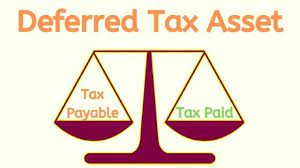Introduction
What is a deferred tax liability? Deferred tax liability is the term used to describe income taxes that are due in the future. The difference between how specific transactions are handled under tax law and the relevant accounting structure leads to liability. There could be several financial reporting cycles before the deferred tax liability is satisfied. IAS® 12, Income Taxes, governs the treatment of deferred taxes. It's important to note that, in this context, "income tax" refers to the tax assessed on a company's profits or losses, not your earnings. "Corporations" or "corporate income tax" is used in some jurisdictions to describe taxes on enterprises.
The FR financial reporting norm mandates that any deferred tax be recognized as a liability in the IFRS statement of financial position. A deferred tax liability, as defined by International Accounting Standard 12, is the sum of income tax that will be due for transitory taxable differences in future periods. For this reason, deferred tax can be characterized as a tax obligation that is put off until a later time. However, the term "temporal disparities" must be defined to comprehend this claim entirely.
Effect on Tax Holiday Concerning DTA/ DTL

Sections 10A and 10B of the Income Tax Act of 1961 permit tax holidays for newly established enterprises in free trade zones and those with a 100 percent export focus. The government may temporarily waive some taxes on particular goods and services if requirements are met. Businesses shouldn't generally need to worry about deferred tax (DT) due to timing discrepancies that close during their tax holiday. After the tax holiday expires, any DT resulting from a timing difference that vanishes must be recorded in the year in which it initially materialized.
Functioning of Deferred Tax Obligation
The deferred tax liability on a company's balance sheet represents its future tax payment obligation. The difference between taxable revenue and EBT is multiplied by the company's anticipated tax rate to calculate revenue tax. Deferred tax liability, sometimes known as an organization's "underpayment" of taxes, is money that will eventually need to be paid to the government. This in no way implies that the company has cheated on its taxes. Instead, it acknowledges a payment that hasn't yet been due.
For instance, a company must pay corporate income taxes if it has annual net earnings. Since the tax bill is due this year, the spending should align with the current fiscal year. The tax payment is deferred until the following fiscal year, though. Tax is recorded as a deferred tax liability to reconcile the discrepancy between fees' accrual and cash timing.
Timing Difference
The Income Tax Act's requirements are applied to the company's financial statements prepared by the Companies Act's regulations to establish its taxable profits. Due to the items that are particularly permitted or prohibited for tax purposes each year, book profit and taxable profit may not always add up to the same amount. The timing difference is between an itemized expense or income book and the tax version. A transitory difference is a distinction between taxable and book income that may be eliminated in a subsequent accounting period. A "permanent difference" is a distinction between taxable and nontaxable earnings that cannot be corrected in the following year.
Tax Base
IAS 12 establishes the following guidelines to aid in determining tax bases:
- Assets: Taxable economic advantages arise from recovering an asset's carrying value, which can be offset by deducting the amount the asset's tax base has decreased. If an investment recovery doesn't result in any taxable events, the asset's pretax revenue will serve as the asset's tax base. Liabilities recognized have tax bases equal to their carrying amounts, less any nontaxable income anticipated in succeeding periods.
- There are other liabilities in addition to these debts: The carrying amount of a penalty is its tax base, less any sums that may be tax deductible in subsequent years due to that responsibility.
- Unrecognizable things: The carrying amount of items with a tax basis that are not recognized in the statement of financial position is zero.
- Tax bases are difficult to determine: Suppose the tax base of an item is not immediately apparent. In that case, it should be established appropriately so that the tax consequences of its recovery or settlement are recognized as a deferred tax amount.
Conclusion
Deferred tax liability is a commitment to pay taxes at a later time. When a person or company waits to take action on something that would otherwise result in tax expenses being recorded in the current accounting period, they violate the law. For instance, the individual saving for retirement will have to pay taxes on that money when they withdraw it if they put money away in a 401(k) and it accumulates interest.




